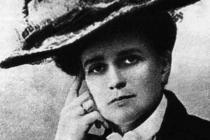Good heating and lighting in the greenhouse are important not only in spring and autumn. In winter, the viability of plants and their future yield depends on the proper microclimate inside. To organize the right place to disembark any flower or bush, you need to know the needs of plants, the climatic features of the region and take them into account when building the greenhouse.
Features and types of lighting in greenhouses
Light is required by plants constantly, so in most cases make transparent.
Organization of artificial or natural lighting requires compliance with certain requirements.
Daylight
Plants in year-round greenhouse can overheat or suffer from lack of sunlight. Therefore, it is important to place the structure on the site so that the roofs are directed to the north and south. This location has its advantages: cold season, plants will still get a lot of sunlight. The morning rays will warm the southern side of the greenhouse, and in the evening they will receive their light and the north side. In the spring, the maximum of the sun will fall on them.
Calculate the correct corner of the skates for a particular structure, thus you can save on additional lighting.
Greenhouse owners should remember that in the summer time the sunny side must be dialed, for example, by special screens painted with tight paper or paint applied to the glass.
Natural lighting is enough spring greenhouse, the rest will need additional lamps.
Artificial lighting
Its sources are used in winter and autumn when plants do not get sunlight in the required quantity. The thermal-loving plants from the southern latitudes depending on the climatic conditions of your region they will be needed throughout the year.
Sources of artificial lighting include:
- Incandescent lamps for lighting. Not suitable for greenhouses. They have a small efficiency and "unpleasant" plant spectrum of light, in which too many red, orange and infrared rays suitable for reading. Colors they are contraindicated. It is possible to use incandescent lamps only at the stage of germination of certain types of greenery: green onions, parsley, dill, sorrel.
- Fluorescent lamps. Suitable for lighting greenhouses thanks to a good spectrum, it is not so expensive. However, require constant monitoring and proper installation due to low light prospects. If the voltage in the network is falling, the lamps do not turn on.
- High pressure mercury lamps. Some sellers are positioning this type of lamps, as specially designed for lighting greenhouses, but this is a controversial statement. Mercury lamps lightly illuminate the room, they are cheaper than sodium. When installing, you can do without a specialist call. But, if such a lamp will accidentally break in the greenhouse, the plants will have to throw away. In addition, intensive ultraviolet radiation from such a source slows down the growth of plants.
- High pressure sodium lamps. Suitable for lighting greenhouses, but require a complex installation, additional starting equipment and continuous control over their work. At the same time, they are economical and highly illuminate even a large area. If the greenhouse will be on the plot constantly, then you can spend on equipment for lamps and save on the consumption of electricity in the future.
- Metal halide lamps. Dear and quickly burn out, but are ideal for lighting greenhouses and greenhouses.
- LED bulbs.Economic and perfectly suitable for artificial lighting plants. Based on the needs of cultures, you can choose one of the light options: blue, red, combined.
Choosing artificial lighting, it is primarily to rely on the size of the greenhouse and the attitude towards the light of planted plants. If the area is small and plants are not light-friendly, then you can choose any option, the benefit will still be. LED lamps are suitable for large areas and exotic plants, and sodium and luminescent.
But even the most good lamps will not give flowers and other greenery of the desired heat, so that heating in the greenhouse should take care before the onset of cold weather.
Heating in Teplice: Proper and inexpensive
In the winter greenhouse, you need to create a comfortable microclimate so that the plants do not slow down the vegetative processes. The choice of ideal heating depends on varieties of cultures, climatic conditions of the region, the financial capabilities of the owner, the location of the structure and its form.

The cost of heating the greenhouse depends on its shape and area
There are several heating options for the greenhouse, each of them has certain advantages and disadvantages. Consider some of them.
Electric heating
The most popular type of heating, which uses in greenhouses throughout Russia. It can be installed in the greenhouse of any size. The choice depends on the ease of installation, the cost of maintenance and the type of device that provides electrical heating. For example:
- Heat guns.Create a constant stream of air of any desired temperature and can save the crop even in the most severe frosts. Install them at the entrance to the greenhouse and in the distance wall. This is enough for heating soil and plants.
Advantages: Easy installation, the possibility of using at any time of the year.
Disadvantages: A complex control system for heating, the lack of self-heating the greenhouse for several days. Such guns cannot be kept constantly, it is expensive and unsafe for plants.
- Calorifers. Familiar to all ribbed heaters are installed in a greenhouse and connect to a shared network, due to which the necessary heat is created inside. The temperature on such a device can be adjusted manually.
Advantages: Easy installation and maintenance, fire safety, availability of inexpensive models in the assortment.
Disadvantages: The device cuts the air and requires additional control over the heating level when the temperature is raised on the street.
- Convectors. Usually they are connected to the general system and placed around the perimeter of the greenhouse. Fans can be used for uniform heat distribution along the construction area.
Advantages: Easy installation and maintenance, low cost.
Disadvantages: Danger of overheating and driving landings, needed constant control over temperature level.
- Heating mats. This infrared heating has a positive effect on plants. Mates are placed in different places greenhouses, in the ground, at a depth of at least 40 centimeters. From above, it is necessary to put a metal mesh that the earth does not spoil the equipment.
Advantages: Low cost of energy and consumables, the possibility of heating large areas, constantly monitor the temperature level is not necessary. To all of the time, when installing heating mats, there is no need to register such heating in controlling organs.
Disadvantages: Complex installation, mandatory calculations. Attracting third-party employees to work with electricity, carrying it into a greenhouse, and the subsequent installation of heaters.
Air heating
Professional heating systems of greenhouses that install specialists. The heating system distributes warm air evenly throughout the greenhouse through a special sleeve, which is paved on the room.
Advantages: The correct arrangement of the heating element for uniform heating of plants throughout the greenhouse area. Air comes from above from its central part and does not harm the root system of plants.
Disadvantages: Affordable price, the impossibility of self-repair or replacement of the heating system parts.
Gas heating
This type of heating is not very often used. There are two versions of gas heating. In the first case, gas cylinders are installed directly in the greenhouse and connect to burners. In the second - a gas pipe is carried out into the greenhouse. However, in both cases there is a danger of gas leakage and explosion.
Advantages: The low cost of heating, the ability to purchase and mount heating on their own, simple maintenance.
disadvantages: Insecure design, the need for constant control. Gas heating to the greenhouse requires permission of controls.
Stove heating
This species is suitable for places where there is no gas, and taking electricity to the greenhouse is problematic. Solid fuel boilers put greenhouses in several places, melt for warming once a day or every day, if strong frosts are on the street. Ideally accompany furnace heating with heat-repeging screens. In this case, even a large greenhouse area can be heated with one boiler.
Dignity: Easy installation, inexpensive fuel.
Disadvantages: Permanent control over the work of the boiler, the lack of self-heating.

Heat heating can be organized independently
Alternative options
There is another option that the dackets use. With the help of organic waste (litter, compost, other fertilizers) in the greenhouses organize biootoplation. The heat is highlighted in the process of decomposition of the organics in the ground, both the soil is filled with and useful substances. However, it is impossible to calculate the amount of heat, and the duration of the natural "heater" cannot be monitored.
How to choose heating and lighting for greenhouses?
It is impossible to create from the heating system and artificial light that would come to all greenhouses without exception. The location of heaters and light zones depends only on the area of \u200b\u200bthe greenhouse and the location of the plants in it. Before starting to build a greenhouse, consider a general view of the dispersion, the arrangement of heaters and what they will be.
Do not forget to take into account the features of cultures. For most vegetables, berries and greenery, there is a sufficiently small heater that would save plants and ground from frozen. For colors and exotic, it will be necessary to determine the heat points and form a pool of the heat-robber plants around it. Artificial light should be established on mandatory, if there is a financial opportunity. Flowers from this will grow better and become brighter.
If you want to have fresh greens, vegetables and even exotic fruits on your desk all year round, then you can not do without. Now there are many technologies that allow you to create an optimal temperature in the room in order to achieve a generous harvest in winter.
The leaders in this industry are infrared heaters for greenhouses. In this article, we will look at what is this type of heaters, how to choose them correctly and how to use similar devices.
About the infrared heater and its advantages
The IR heater is an excellent imitation of the solar shone. The principle of its work allows you to create rays that are similar to nature with natural light. Such rays are absorbed by the surfaces and objects that subsequently give their air.
The same thermal effect is also inherent in sunlight.
In addition, the infrared heater for greenhouse has another number of benefits, among which:
- The ability to optimally distribute heat.
- High level of practicality.
- High efficiency.
- Full absence of drafts.

Each of these advantages must be stopped in more detail:
- In the event that you have ever used convective systems, then you probably know that the heated air is striving up, while the cold has a feature to accumulate below. Therefore, they will be ineffective, since the vegetation is below.
In the case of infrared equipment, the uneven temperature distribution is eliminated, which makes it possible to significantly reduce the level of heat loss, while ensuring the plants with the necessary level of heating.
- The aforementioned draft of drafts is solved as follows: the device is located in a zone with reduced heat insulation (for example, near the window), and compensates for heat loss with its work, while not provoking the movement of air flows.
- Infrared heating of greenhouses is a very practical option, since it is possible to zoning the territory, exposing a certain temperature for each of the zones. It also allows us to talk about the efficiency of the device, because when it is used, electricity is not expendable for all space.
In the case of proper installation and use of such devices, it is possible to ensure economy of electricity to 40%.
The results of using IR heaters

- If you believe the experience of the experienced dacities, the heating of the greenhouse infrared heater is reflected on the improved germination, which reaches an average of 30-40%.
- The device does not dry the microclimate.
- Does not create noise and does not distinguish unpleasant odors.
- The infrared heater in the greenhouse allows you to achieve soil warming to 5-7 cm. This allows you to stimulate the root system of plants, creating favorable conditions for their growth. Such an effect can not boast any other device.
- Heating of greenhouse infrared heaters allows heatent to heat to the optimum temperature - 28 degrees Celsius. In this case, the thermometer is held at 21 degrees.
Choosing infrared equipment
In order to provide plants with the best greenhouse conditions, it is necessary to know the subtleties of the choice of IR heaters. Modern equipment is two species, divided into light and long-wave devices.
Consider each of the species in more detail:
- Light devices are heaters with heat heating up to 600 degrees. They are recommended to choose for very large areas of premises.
- Long-wave do not heat up to such high temperatures, which allows them to use them in small rooms, for example, in a greenhouse in the country area.

Tip! If you cannot provide the power supply of the greenhouse - this is not a misfortune, because there are models of IR heaters operating from liquid fuel and gas.
Thus, the optimal choice for a small greenhouse will be a long-wave unit.
Organize correct heating
Since infrared lamps for heat heating are quite mobile and easy to install and connect, they are quite simple to install them. However, this process has its own nuances to which it is necessary to listen.
There is its own instruction for each type of appliances:
- The first way to organize the right heating of IR emitters concerns the devices having a power of 500 watts.

- Such aggregates are usually set in those places for which are peculiar low temperatures (Under the windows or by the walls).
- The minimum distance between the instrument and the plant should be at least a meter.
- Particularly convenient are heaters with ceiling mount. In this case, they are hung over the table on which seedlings are located.
Tip! Determine the optimal height on which the device should be located relative to the table, it should be individually. The device is set to a certain distance and does not move until the plants start growing. When they start climbing, the device will need to hang higher.
- For every one and a half or three meters of territory, it is usually installed on one instrument. Typically, the distance between the heaters depends on the height on which they are suspended, and the size of the heated room. The higher the heater is suspended - the greater area it can heat.
Tip! If possible, the equipment should be valid for maximum height. In this case, you will need to set a smaller amount of instruments.
However, we also note that the higher the heater hangs - the smaller the heat gets the plant, so it should first take into account the level of comfort for seedlings.
- Use devices with a lower power (250 watts).
In this case, to ensure the desired effect, you will have to use a larger number of devices.

- Heaters are installed no more. Than one and a half meters from each other.
- Speaking about the height of the device over the plant, it must also be determined by an experimental way. To do this, we install heaters in an arbitrary position until we mark the growth of seedlings. Then they need to be raised in proportion to the growth of plants.
- The main advantages of such devices are their compactness and low weight. Therefore, they can simply hang on the wire, without fixing.
- For heaters of small sizes, there is a simple council that allows you to achieve maximum heating efficiency. To do this, we must arrange the devices in a checker order, which will allow minimizing the number of "dead zones".
But, if you need to zonate heat, then the heaters should be positioned directly above certain plants.

We consider the disadvantages of IR heaters
- The main minus of such devices is their high price. However, it is quite justified by the efficiency of the equipment.
- Many users complain that such devices come into disrepair too quickly. In order to not be disappointed in the current equipment in the future, it is necessary to approach the procedure of its choice with all seriousness.
What to pay attention to when choosing a heater
In order to buy a high-quality heating system, you should listen to a few tips:
- If in the market you meet products having a logo of a well-known brand, but at the same time different costs - it should alert you. Most likely you encountered a cheap fake, which will not last for a long time, and will leave a negative attitude towards all similar systems.
- The device must be sold in the package. It should not be dents and damage.
- If possible - check the equipment directly during the seller. During operation, the heater should not make a cod.
- After purchase, require a warranty card that has a printing company.

Conclusion
IR heaters are a guarantee of success in the greenhouse breeding of various cultures. The correct installation and use of such devices will give astounding results ().
The video in this article will help you learn more than more information on the topic.
There are four basic factors that are most important for plants cultivated in a greenhouse or greenhouse. Such parameters include lighting, heat, water and air. And if the equipment for heating the greenhouses is not required during the summer cottage, then a short day or frequent cloudy days suggest the highlighting of greenhouse plants.
To date, numerous manufacturers are offered a significant amount of various types of equipment for artificial lighting of plants. The gardener, far from the wisdom of electricians, is very difficult to understand the features of each type of lighting device and adopt the only correct solution to acquire a certain type of lamp.
Induction lamps for, as well as infrared lighting devices, which have individual readings for installation and operational features are most popular.
General
The process of cultivation and heating of greenhouse plants involves the presence of artificial highlighting, which complements the natural lighting flowing through the transparent or translucent greenhouse coating. Such a need is due to the insufficient growth and development of plants of the duration of the daylight in the autumn and winter periods.
The greatest lighting efficiency is observed with the skillful combination of several variants of the lamps. In addition, it should be borne in mind that some types of coating do not allow the use of a certain type of lighting lamps. In addition, when choosing, it is necessary to carefully familiarize themselves with the basic technical parameters and characteristics of each specific type of lighting device.

Which lamp to choose for greenhouses (video)
Characteristics of induction lighting
Induction type lamps are very popular and quite often used to cultivate greenhouse plants. The structural features of induction lamps are characterized by the complete absence of incandescent threads, as well as thermo-cathodes, which contributes to increasing the life of such lamps to twenty years.
The tightness of the case makes it possible to prevent pollution of the lamp from the vapor of metals, and the presence of mercury in the form of amalgam with the metal, which are enclosed in a special process make the lighting device are environmentally safe and facilitates the recycling of the lamp that has become unusable. The most commonly used induction lamps:
- ring-shaped;
- rectangular shape;
- mushroom shape.
The induction luminaires used in greenhouses are supplied with electronics, which levels:
- voltage drops;
- electric trifles;
- short circuit current.

In addition, such lamps are different:
- high color reproduction index;
- light output indicator ≤ 85 lm per W;
- complete absence of flicker;
- the operating frequency is 190 - 250 kHz.
The complete lack of waiting time between the processes of inclusion and the ability to regulate light intensity makes such a type of lamp very attractive for use in the greenhouse.
Characteristic of infrared lighting
Infrared lamps are no less popular and in demand for growing thermal-loving plants, as well as heating of greenhouse structures. Infrared lamps refer to the instruments, the principle of operation of which is very similar to the operation of conventional incandescent lamps. The basis of such a lighting device is flask. Most often there are infrared lamps with a red glass flask.
The color forms the radiation spectrum and contributes to an increase in the common efficiency of the IR lamp. When passing through stained glass, the rest of the share visible light Gets "staining" in infrared color. Galogen type infrared lamps are most popular. Very often, this type of lamps is used to heat the greenhouse structures and creating comfortable conditions for plants.

For heating, lamps with the following technical parameters are used:
- maximum power indicators at 250 W;
- the maximum temperature indicators are 600 ° C;
- indicators of IR waves ranging from 3.5 to 5.0 μm.
If infrared lamps are used exclusively for heating the greenhouse and greenhouse structures, it is necessary to correctly calculate and competently carry out suspension of such lighting devices. Otherwise, a microclimatic imbalance may occur, negatively affecting the growth and development of greenhouse plants.
Comparative characteristics
And infrared lamps used for heating and illumination of greenhouse plants, and induction lighting devices have significant advantages. However, there are some differences whose assessment allows you to make a choice in favor of one of these devices.
Ordinary IR lamps as lighting devices, of course, cannot compete with induction lighting devices. However, if the lamp is used to a large extent for heating, then preference should be given to IR lamps.

How to choose a lamp for plants (video)
Opinion of specialists
Some design features of lighting greenhouse devices should be taken into account, which will allow the most correct and competent installation of such equipment in the structures of protected soil:
- the higher the temperature indicators from the turned on the lighting device, the more significant the distance should be withstanding from it to cultured plants;
- the various types of plant cultivated in the greenhouse at different stages of their development need a certain type of illumination, which causes the need to consider a fairly easy and trouble-free shift of lighting equipment;
- guarantee successful cultivation Any cultural can be performed by the rule of combining greenhouse lighting devices of different types;
- it is allowed to use universal lighting equipment models in the greenhouse, but such devices are less popular due to too high cost;
- the optimal option is to install several options for lighting equipment, which will complement each other functionality;
- to reduce electricity costs should be equipped with a greenhouse space with special reflectors and reflectors.
The higher the fascinated lighting device from plants, the smaller the risk of thermal burn with greenhouse cultures. In addition, a significant part of the greenhouse lighting equipment industrial production Already has elements of reflectors, but independently made structures require such additions.
With the right choice of lighting equipment and the uniform distribution of the backlight, it is easy to achieve an increase in yield in greenhouse conditions.
In order not to lose the material, be sure to save it to your social network VKontakte, classmates, Facebook, simply by clicking on the button below.
Infrared heaters are a fairly new tool to maintain heat in greenhouses. Equipment is in demand, as it allows to obtain high yields even in cold summer conditions. In addition, to plant seedlings in greenhouses with infrared heated It is possible much earlier: the conditions that are created there for landings are optimal.
Greenhouses made of polycarbonate are distinguished by a high degree of heat conservation, but only with a good sealing of the joints between the sheets of the material. Depending on climatic conditions, heating is partial or complete. Infrared heaters are suitable for both options, since with minimal costs of electricity, there is a significant amount of heat, which is absorbed by surfaces.
Opinion expert
Izosimov Vladimir Nikolaevich
Ask a question expertThe main feature, which should be taken into account, making the heating system in the greenhouse, is that the polycarbonate will begin to melt from too high. Because of this, when installing, it is necessary to make sure that the device does not overheat the wall and the roof of the greenhouse.
Views
IC heaters belong to the category of perfect heating devices for polycarbonate greenhouses: they are easy to install, effective even in cold climates, as much as possible. The advantages of all types of infrared heaters are:
- the absence of overheating and overheating of air, since only surfaces are heated;
- lack of negative effect on oxygen level and air humidity;
- full-fledged soil warming to a depth of 6 cm;
- the similarity of the heating process when using ceiling models with the flow of solar heat.
By the installation method, heaters are divided into three types:
- Outdoor devices - The thermal radiation goes to the side and slightly up from the device installed below.
- Wall mounted - The heater is attached on the wall of the greenhouse and radiates heat straight, and also from top to bottom.
- Ceiling - Heat propagates from top to bottom, which is the most natural for plants.
According to the principle of operation, the heaters are divided into light devices, the surface of which is split up to 600 degrees, and long-wave, in which the heat is significantly lower.
The first is more suitable for industrial greenhouses, the second - for small installed on the personal compound. Heaters are produced in the form of lamps or film panels.
Different models of infrared heaters are equipped with thermostators or do not have them. In the absence of thermostat, the included device constantly gives the heat, spending at any time of day the same amount of electricity. Installing the heating to the greenhouses only until the desired temperature fails. The presence of the thermostat allows you to constantly maintain the selected temperature in the greenhouse and spending electricity more economically.
Today, many Russians, which have homesteads or country sites, think about the construction of greenhouses. Such a solution allows you to diversify the diet - it's nice to see in your desk throughout the year fresh vegetables and herbs, and also essentially support the family budget in our difficult time.
So, suppose that your greenhouse is already ready: the foundation was built, the framework was built, there is glazed (cellular polycarbonate or film), the soil is bold, the beds are created. Well thought out questions of watering and heating. It would seem that everything is taken into account. However, this is not quite true. Did you think about lighting? And does it need it? After all, the day of natural lighting is enough, and at night the plants need to relax. For which plants need additional lighting and how it should be, which lamps for heating the greenhouse today exist, we will try to tell in this article.
For normal development and intensive growth, plants require a large amount of energy. They are obtained from light rays: this is the sun in nature, and with greenhouse growing - special lamps.
What should be the light in the greenhouse?
Undoubtedly, solar lighting is most useful for agricultural, so it is necessary to use it as much as possible. However, the duration (in the fall, winter and spring) does not allow cultivation of cultures fully - after all, the plant's energy is needed at least ten or twelve hours per day. In any season (except summer) you will need to use lamps for greenhouse lighting.

To create comfortable conditions for growing cultures, simple rules should be followed.
- Artificial lighting of the greenhouse (as, however, and any other) should not completely replace sunlight. It should only serve to extend the daylight. Therefore, the greenhouse lamp should be mounted in such a way that it does not limit the penetration of sunlight.
- In the greenhouse, the lighting can be intense up to 16 hours a day (it depends on the grown culture).
- Plant lighting should not be throughout all day: instead of growing crops, you will get the opposite result - the weakening and depletion of sprouts.
- Plants require rest and darkness for 6 hours a day.
What kind of light is needed by plants?
All agricultural medication can be divided according to the principle of photoperiodicity. This means that each culture for the formation of fruits requires a particular duration of the daylight. On this principle of plants can be divided into:
- cultures of a short day - they need less than twelve hours (light) per day;
- long Day - Plants require more twelve light hours.
Typically, the cultures grown to obtain flowers and fruits, more light is required than those that are grown by the sake of leaves and stems. It must be taken into account, solving which greenhouse lamp you need. Today, the trading network presents a huge selection of lighting devices for greenhouses. They differ in energy saving, spectrum of emitted light, cost and some other parameters.
What to pay attention to when choosing a lamp?
First of all, you should ask the manufacturer of the lamp. Famous brands guarantee quality, service (which sometimes is expensive). Chinese lamps are attractive mainly by their low price, but, unfortunately, no guarantees, or the service you will receive.
Power lamps (W)
This figure indicates how much energy is spending a lamp for greenhouses per hour of work.
Emitted energy
Light spectrum
It should be recognized that today the greenhouse lamp has not yet been created, which is capable of 100% transmitting the spectrum of the rays of the sun. Therefore, experienced owners to achieve a better result often lamp combine. The biologists managed to establish that a different light spectrum acts in different ways to grown cultures.

For example, purple and blue rays accelerate photosynthesis - the plant is strengthened and grows faster. Yellow and green rays slightly oppress photosynthesis. In this case, the stalks of the plants are pulled in height and thinned. Orange and red rays are the best energy for fruiting and blossoms of plants, but it is necessary to know that when they overshadow, the plant can even die. Hodged resistance increases ultraviolet rays, they are formed in fruits and leaves of vitamins.
Types of lamps for greenhouses
And now we will introduce you to and you determine which greenhouse lamp you need. We hope that the information received will help you make the right choice.
Fluorescent lamps
This type of lamps is most often used in small greenhouses or greenhouses. They are versatile and in cost, and on use - may come to many. The perfect light quality can be achieved by combining warm white light lamps with cold.
Such a greenhouse lamp is capable of working around 2000 hours. Often, for complex exposure to plants, additionally establishes which warns the development of malicious bacteria on the leaves of plants and in the soil. But it should be recognized that for large greenhouses it is better to choose a different type of lighting, because there are too many luminescent.

Benefits
- First of all, the efficiency of the device. Radiation of light of almost full spectrum. Therefore, they can be used at each stage of the development of culture - from growing seedlings to full aging of the harvest.
- Affordable price.
- High brightness.
- Such lamps are not heated, therefore, the greenhouse microclimate does not violate.
- Do not require special technical skills to install.
disadvantages
- The luminescent lamp for the greenhouse is too big and can close the access of natural sunlight during the daytime.
- It has a low light output.
- Reacts to changes in the external temperature - for its normal operation, a temperature is required +25 degrees. When it decreases, the lamp can just go out.
- It does not withstand high humidity (no more than 70%).
Lamps are attached above plants in a horizontal position, fixed in rectangular metal reinforcement. They are placed at an altitude of up to fifty centimeters for plants of light-chapters, and at a height of fifty centimeters and above - for plants that prefer not too bright lighting.
Mercury lamps
For growing plants in greenhouses and greenhouses, mercury lamps are produced - DRLF, contributing to the active photosynthesis of plants. Their radiation spectrum is close to red, so it is better to use them during the aging of fruits.

Nevertheless, it should be aware that the disadvantages of such devices are greater than the advantages. These include:
- Danger in operation. After breaking such a lamp, you will not be able to collect mercury balls. In this case, it is necessary to change the soil and destroy all the plants.
- This lamp cannot be thrown after the expiration date. This has a special disposal technique.
- It is distinguished by too intense ultraviolet radiation.
High pressure sodium lamps for greenhouses
They are related to the discharge of radiating and orange spectrum. Experts suggest that the blue part of the culture spectrum will receive from natural daylight lighting.

Benefits
- The main argument in favor of such lamps can be considered their economy. Such devices consume a small amount of electricity and at the same time cost cheaper analogues of economy, for example, LED lamps. It is very important if you need to highlight a greenhouse large on the area.
- In addition, sodium lamps for greenhouses work up to twenty thousand hours.
- The light output significantly exceeds fluorescent lamps.
disadvantages
- Sodium lamps for greenhouses allocate a lot of heat. This can be considered and dignity and disadvantage of the device. On the one hand, such lamps for the greenhouse in winter are quite effective. They can be an additional source of heating. But in the spring, in the fall, and, of course, in the summer, such heating can harm plants, and the owner will have to constantly monitor the temperature in the greenhouse.
- Such lamps adversely affect the development of young plants - the red part of their spectrum makes the seedlings stretch, the stalks become thin.
- Sodium lamps can attract harmful insects.
- Inside these lamps there is a mixture of mercury and sodium. Therefore (like mercury lamps) they are not safe.
- Sodium lamps cannot be connected if the oscillations in the voltage network of more than 5%.
LED lamps for greenhouses
More often they are called LED lamps. Despite the fact that they are quite expensive, such a type of lighting is becoming increasingly popular. By drawing up a combination of such lamps, it is possible to achieve light with the desired spectral composition - use individual lighting for any variety of plants. Greenhouse lighting lED lamps Allows you to adjust the intensity of light depending on the height of the placement of instruments and their quantity. For example, during the growth of plants, it is possible to give them more light with a blue spectrum, when aging fruits - with red and orange.

Benefits
- Efficiency of electricity consumption.
- Work at very low voltage.
- Long service life (up to 100 thousand hours).
- Do not heated - the microclimate of the greenhouse is not violated.
- The possibility of burning burns by plants, even in the case of the maximum distance to them.
- LEDs are resistant to moisture, change temperatures and mechanical damage.
disadvantages
- There is only one lack of such lamps - high cost.
Infrared lamps
Such a lamp for winter will fit perfectly. It must be said that today more and more greenhouse owners prefer new infrared systems. These systems are effective and economical, the conditions that are as close as possible to natural are able to create greenhouses.

Benefits
- For the greenhouse, the plants and soil are well warmed.
- The air temperature rises from the energy given by the walls of the greenhouse and the soil. This is the main difference between IR systems from electrical and convective methods, in which air (heated) rushes upwards, and plants and soil remain in the coolness.
- Such heaters, if desired, can be equipped with thermostators, which at a certain point stop the heat supply and resume heating when the temperature decreases.
- Air quickly warm up. IR radiation does not pose a danger to any person or plants.
- Do not drown air.
- The system is practically silent.
As you can see, today there are many lamps for greenhouses. After reviewing their disadvantages and advantages, each owner will be able to pick up a lighting source suitable for its greenhouse.














